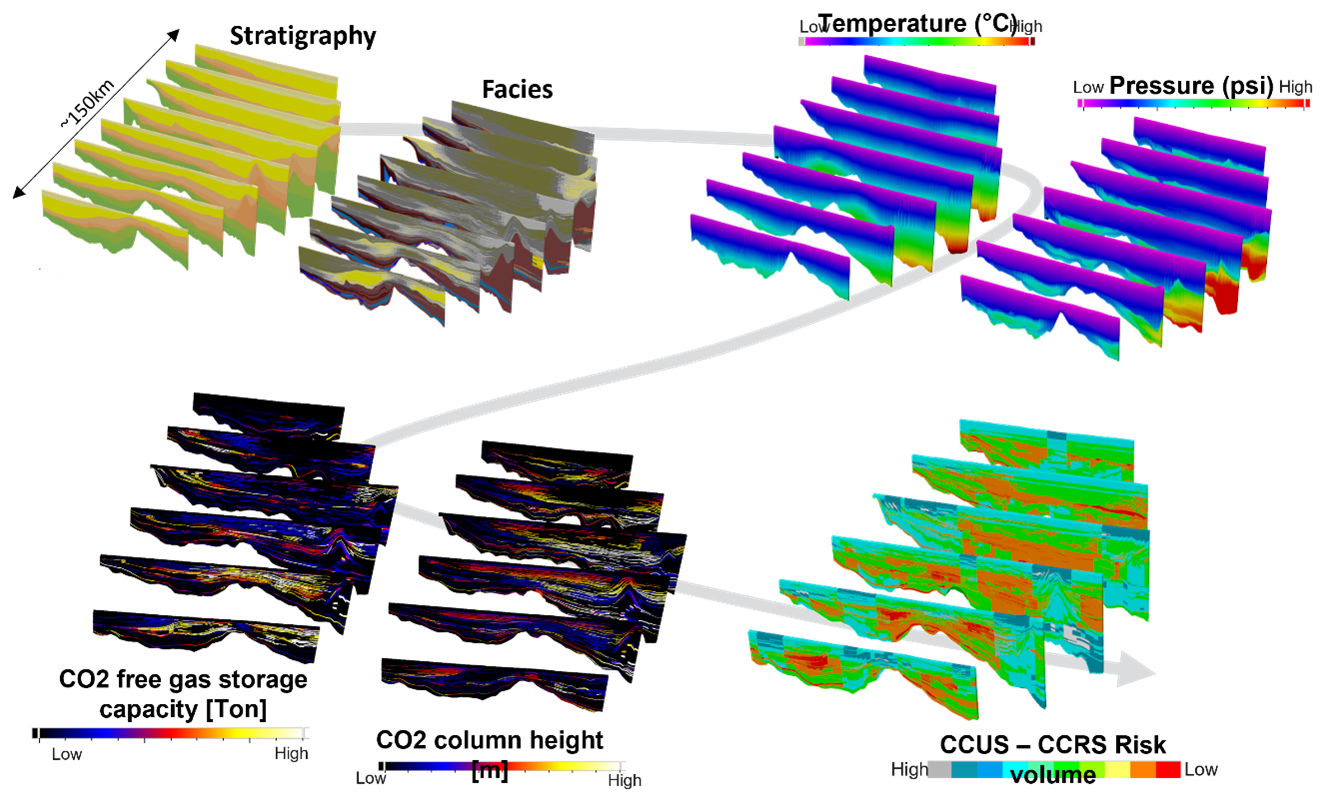Regional reservoir and seal screening for Carbon Capture and Storage using forward modelling: workflow and case studies
Governments and companies around the world have set ambitious targets to reduce CO2 emissions by 2030. Carbon Capture and Storage plays a crucial role in achieving these goals, and thus workflows for identifying underground storage locations and assessing the risk and uncertainty associated with subsurface CO2 storage are becoming necessary. Fortunately, this newly emerging sector of the industry can greatly benefit from well established workflows and technologies of the oil and gas sector which need only minor adjustments to become fully suitable to tackling CO2 storage challenges.
Governments and companies around the world have set ambitious targets to reduce CO2 emissions by 2030. Carbon Capture and Storage plays a crucial role in achieving these goals, and thus workflows for identifying underground storage locations and assessing the risk and uncertainty associated with subsurface CO2 storage are becoming necessary. Fortunately, this newly emerging sector of the industry can greatly benefit from well established workflows and technologies of the oil and gas sector which need only minor adjustments to become fully suitable to tackling CO2 storage challenges.
One of the well established workflows for characterizing subsurface stratigraphic architecture and its properties is forward stratigraphic modelling (FSM). This method simulates numerically sedimentary processes through geological time and provides realistic results that capture the heterogeneities within a reservoir or a seal. In this presentation we show the application of this methodology to the Danish Basin’s Gassum and Fjerritslev formations potential CCS reservoir and seal, respectively. The use of FSM in this case was essential to overcome data limitations and identify potential areas where the combined risk on reservoir and seal presence is minimal. This approach was also combined by a thorough uncertainty analysis using a response surface proxy modelling approach.

Another well established workflow that can significantly contribute to derisking CO2 storage is basin modelling. In this talk we will also present a newly developed workflow that allows for an identification of ideal sites of CO2 injection based on a combination of pressure, porosity, permeability, structure, lithology, distance to faults, environmental/legal parameters… Identified sites can then be injected with CO2 using an adjusted basin modelling workflow where the evolution of the injected CO2 can be modelled for several hundred years into the future.